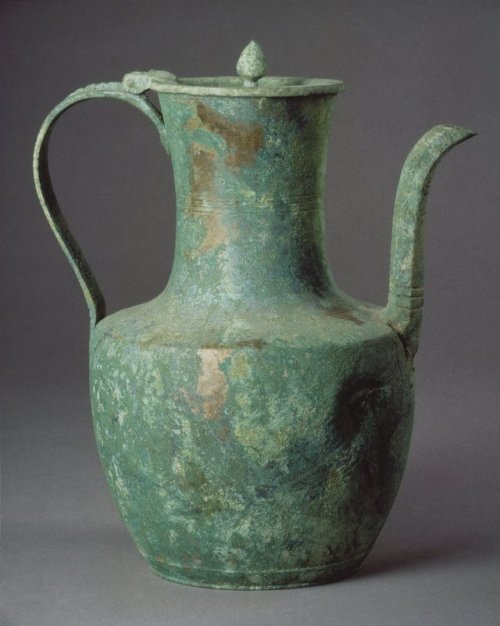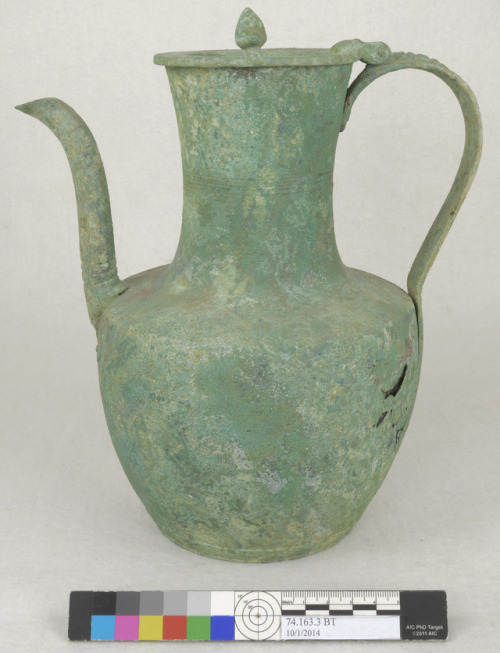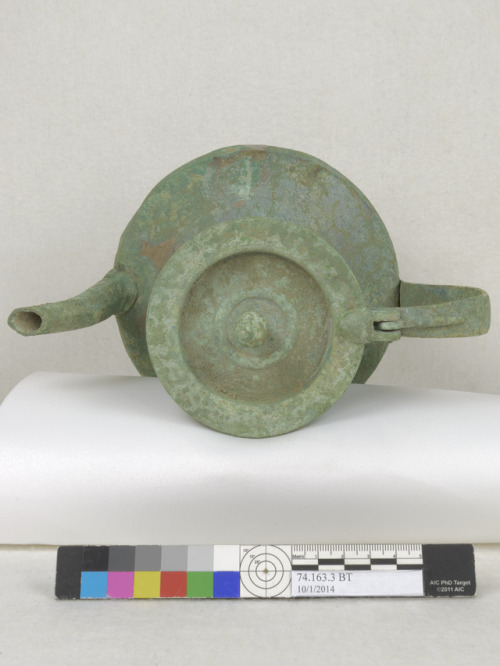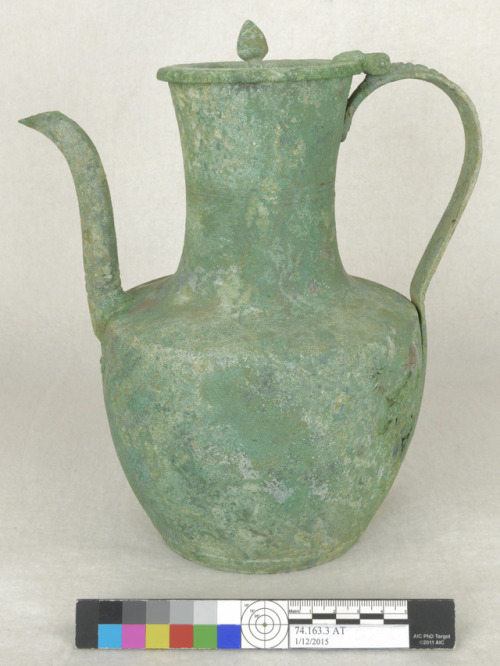Dated c. 12th-3th century, this Goryeo Dynasty Korean pitcher, or ewer, is made of bronze. Many Gory
Dated c. 12th-3th century, this Goryeo Dynasty Korean pitcher, or ewer, is made of bronze. Many Goryeo vessel shapes were created in multiple materials, for example, this bronze pitcher is very similar to a ceramic one in the Museum’s collection. The bronze pitcher is green because the copper alloy metal has oxidized and mineralized over time, creating green corrosion products like the copper carbonate malachite. When metal mineralizes, it becomes more brittle and, therefore, more fragile. The ceramic ewer is green because it is decorated with a celadon glaze, original to the object’s construction.When the bronze pitcher came to the Brooklyn Museum’s Conservation lab, its lid had been previously repaired. The lid repair had been painted to look like bronze, but underneath, the repair was actually a modern brass armature adhered to the object’s original lid fragment with a hard and degraded blue plastic. The plastic material itself was cracked, creating stress on the already thin and mineralized bronze.Previous repair materials were removed with solvents and mechanically, leaving the modern brass armature intact. Reusing the modern brass repair components, a new support for the original lid fragment was created using Asian paper mulberry tissue papers. Available in large sheets in a range of thicknesses, finishes, and colors, papers made from paper mulberry fibers are extremely versatile repair materials. Some are so thin that they are nearly translucent, some are shiny, some are soft and dense, some are very lightweight, and many are handmade. The paper mulberry fibers themselves are very long compared to other fibers (like wood pulp or cotton) from which papers are made, which means that even thin sheets of mulberry paper can be surprisingly strong. The original lid fragment’s new paper support was adhered around the brass armature with conservation-grade acrylic adhesive, combining the structure of the brass with the softness of the paper. The original bronze lid fragment was placed on the paper support, which holds the fragment without causing strain. To visually reintegrate the repair, a thinner paper overlay was toned with conservation-grade acrylic paints.The bronze pitcher and the celadon ewer will be on view in the Museum’s new Korean galleries, opening in September. Posted by Victoria Schussler -- source link
Tumblr Blog : brooklynmuseum.tumblr.com
#bkmconservation#bkmasianart#korean art#goryeo dynasty#korea#korean#pitcher#ewer#bronze#corrosion#art#science#green#conservation#art conservation#art conservator#conservator#crack#repair#mulberry#asian paper#fiber#materials#paper#acrylic#adhesive#highilght




